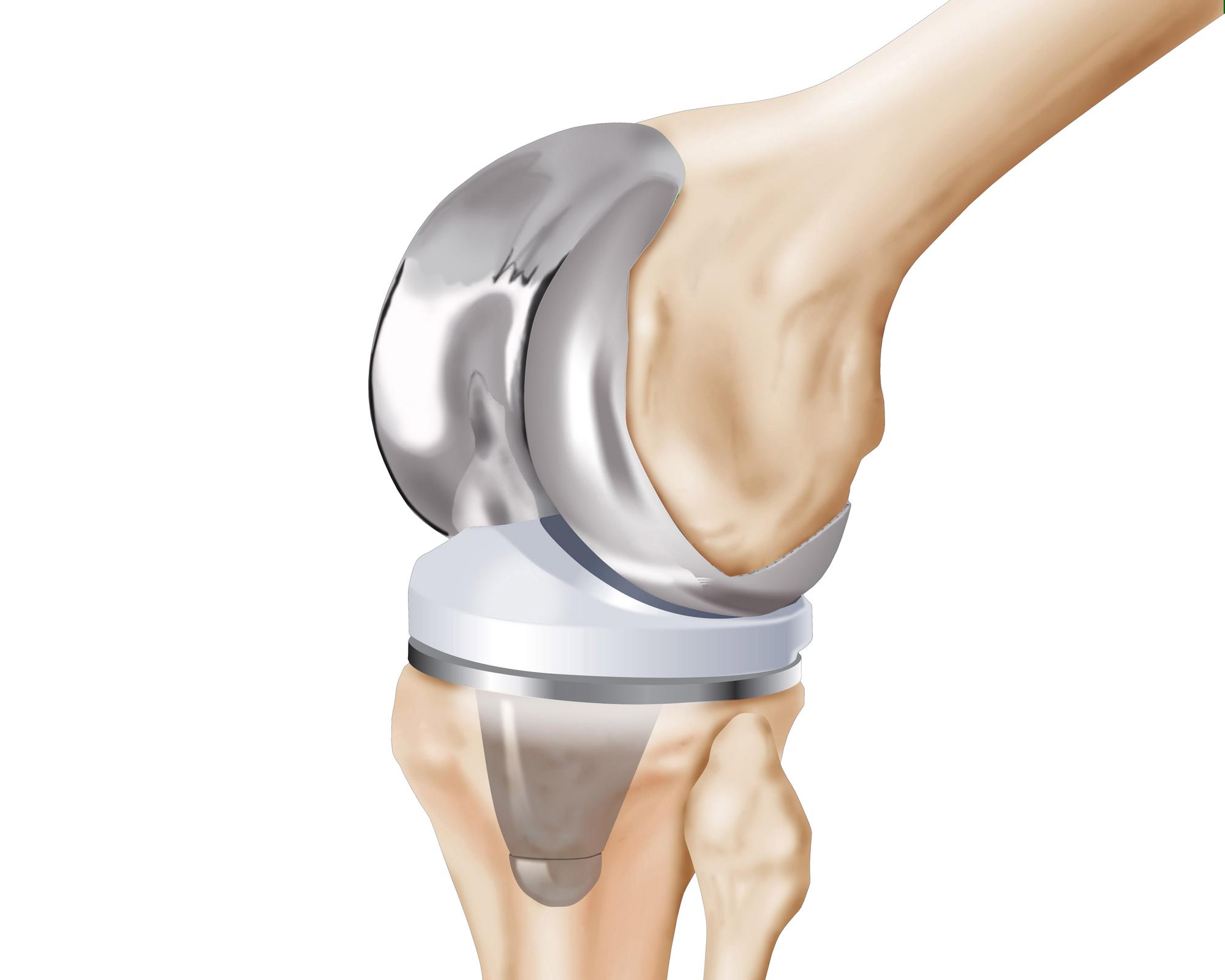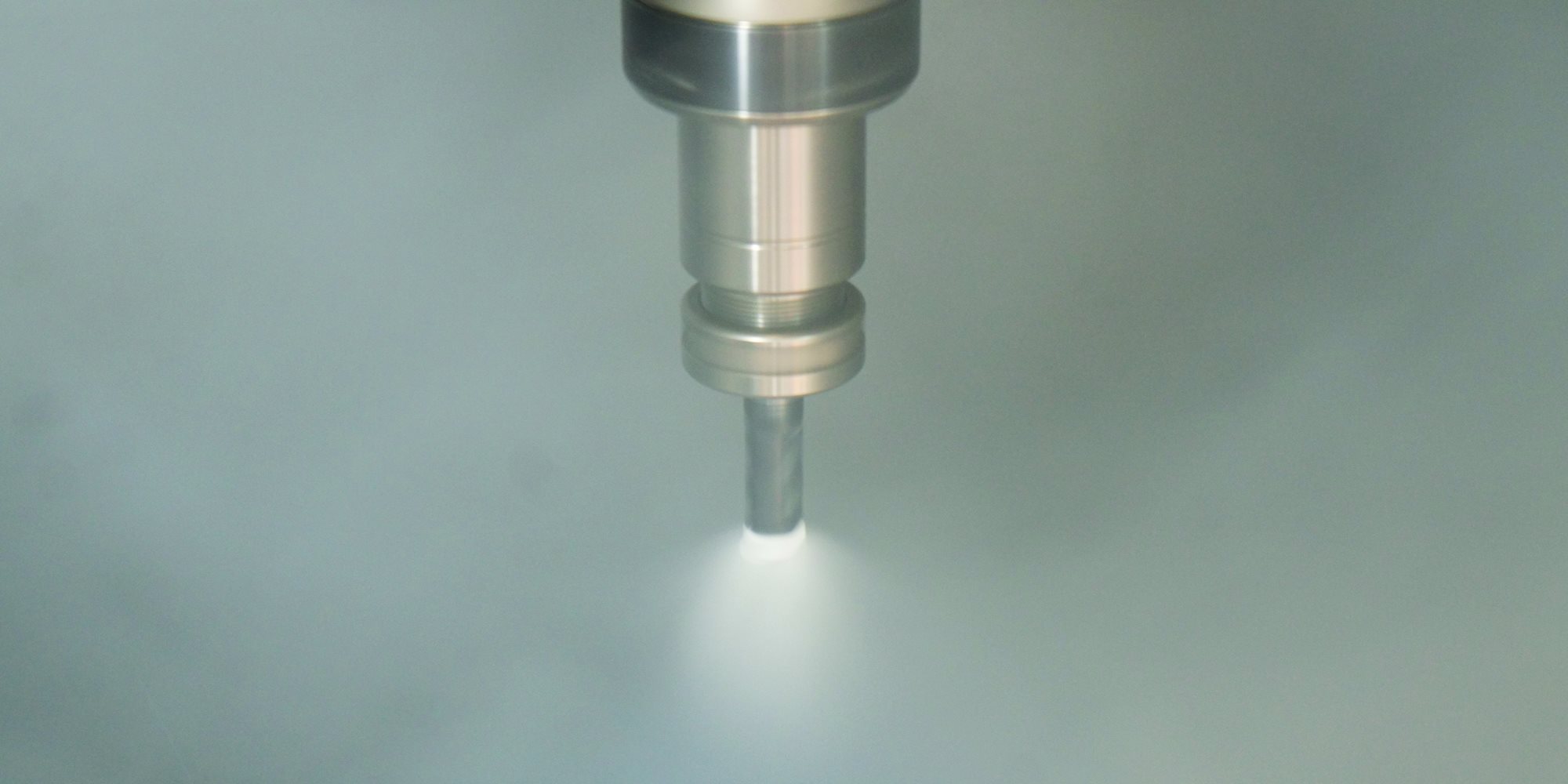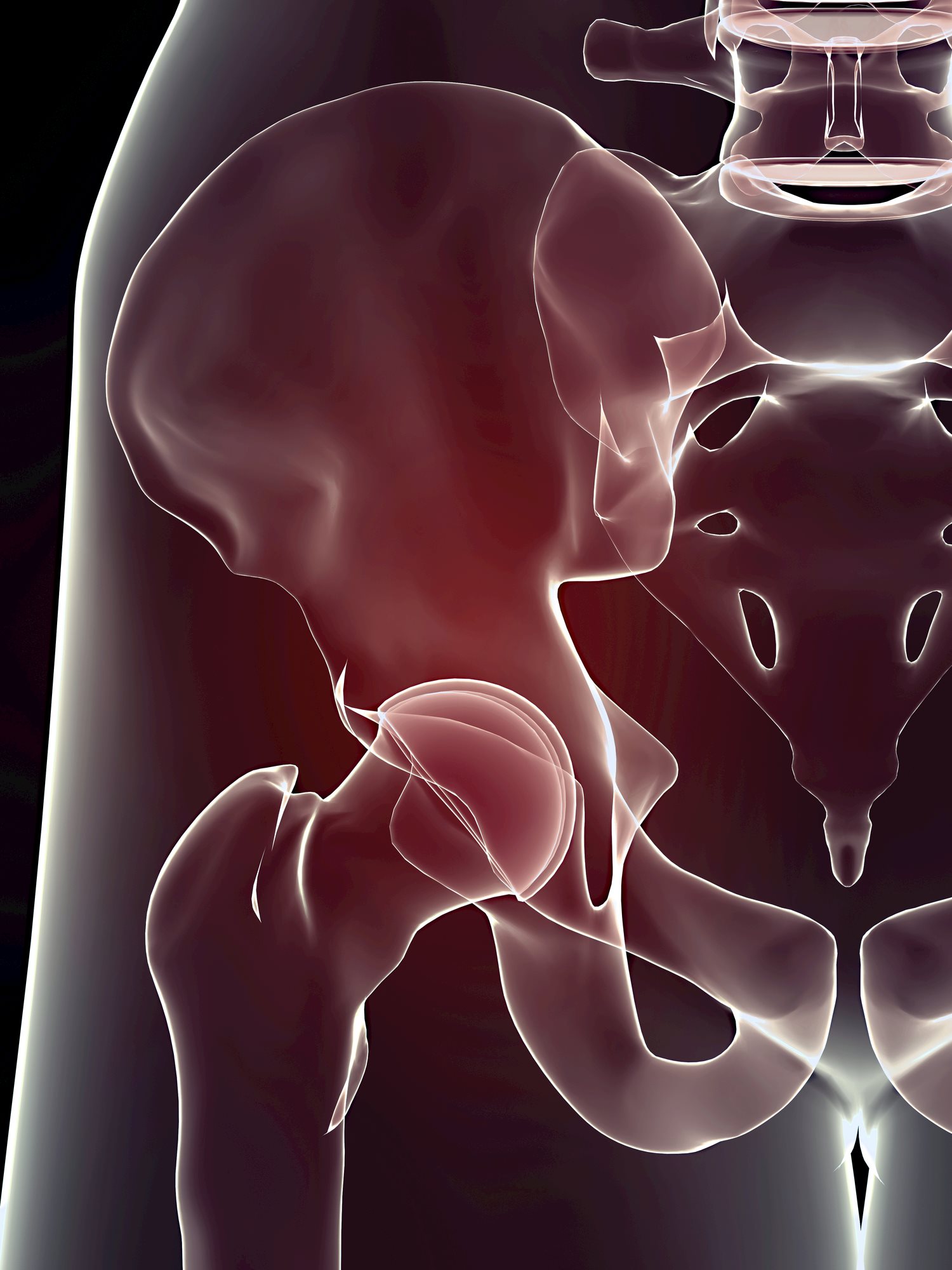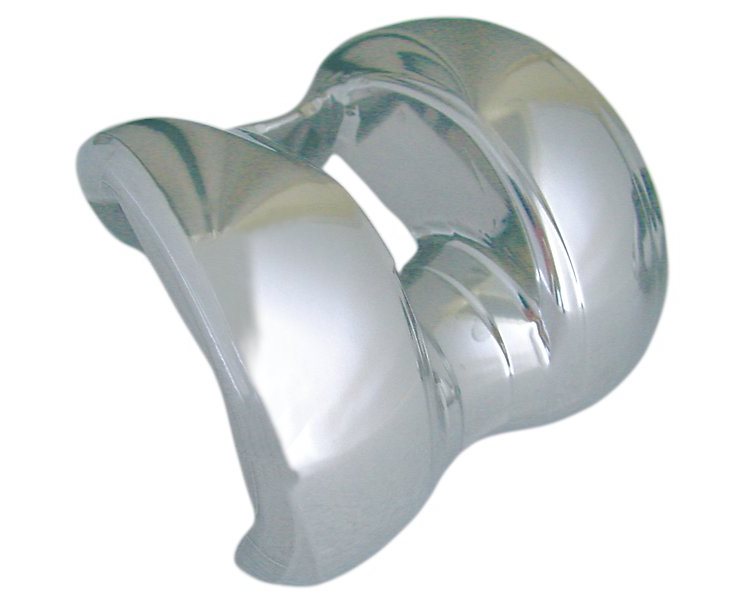New strategies for orthopedic machining
Fagersta, November 2017 — Numerous factors drive a growing demand for orthopaedic replacement and repair devices. The medical parts include artificial joints as well as plates, rods and pins used to repair or reinforce areas of the body after accidents or disease.Demand for the parts is expanding as life spans lengthen and aging results in arthritis and osteoporosis. Worldwide trends towards higher body weight and obesity put additional strain on skeletal joints. Changing lifestyles, from a lack physical activity for some to increased sports participation for others, further fuel demand for renewed body parts. Growth of emerging economies is giving greater numbers of people the resources to afford orthopedic devices. The Global Market Insights consulting group predicts that the global orthopaedic devices market will grow to €50B ($53B) by 2024.
Approximately five major suppliers claim 85 percent of the highly-competitive orthopaedic component market, with more than 200 other companies vying for the rest. In the light of such intense competition, device manufacturers continually seek ways to make the parts more quickly, cost-efficiently. By applying new materials, implants are stronger and lighter and able to perform in the human body for up to 25 years. In addition, orthopaedic devices are part of the overall consumer goods trend towards personalization; medical device manufacturers seek ways to custom-tailor their products to individual patient physiognomy and other preferences. Product diversity has become a key competitive edge. As a result, machine tool makers are under pressure to develop ways to machine complex contours quickly, and toolmakers are focusing cutting tool technologies on speed and flexibility. Advanced manufacturing technology initiatives include 3D printing and advanced cooling technologies for machining operations.
 |
| Figure 1: Complete Knee Components |
Orthopaedic devices include hip and knee replacement components, artificial elbow and ankle joints, trauma repair instruments, spinal bone plates and various repair pins, rods and fasteners. Joint reconstruction makes up over 40 percent of the market, with the majority of that in hip and knee replacement. The key requirements for these parts are strength, reliability, light weight and biocompatibility.
Orthopaedic components are typically machined from bar stock, castings or forgings and then ground and polished. For hip and knee implants, the most common workpiece material is cobalt-chrome alloy, with the use of titanium on the increase. A typical cobalt chrome alloy is similar to CoCr28Mo6, and the Ti6Al4V titanium alloy is most common.
Both materials are biocompatible and very strong and stiff, making them excellent for application in orthopaedic components. However, those same properties also make the alloys difficult to machine. Cobalt chrome is hard and abrasive, has high elasticity and conducts heat poorly. The alloys may contain hard, abrasive elements that cause severe abrasive tool wear, and the chips produced are tough and continuous, requiring special attention to chip control cutting edge geometries.
Titanium is very light and strong. It also work-hardens when machined and is a poor conductor of heat. The heat concentrates on the cutting edge and the tool face. The combination of high temperatures, high cutting forces and friction from the passage of the chip causes crater wear and tool failure. The material’s low modulus of elasticity, a benefit in some implant applications, causes material to spring back from the cutting edge, demanding close attention to cutting tool sharpness.

Figure 2: End Mill Fusion Application
Because machining the materials used in orthopedic implants typically generates excessive heat, use of coolant is required. However, in many cases use of traditional coolants is either prohibited extremely limited to prevent contamination of the parts. Otherwise, time-consuming and expensive post-machining cleaning processes are needed. In addition, coolant itself poses environmental issues in regard to employee health and safety and disposal policies. An alternative coolant technology involves the use of super-critical carbon dioxide (scCo2) dry-cutting technology. this supercritical Co2 acts as a vehicle to deliver dry and enhanced lubrication to a cutting zone.
Developed by Fusion Coolant Systems, the process provides the capability to machine parts without oils, emulsions or synthetics. When carbon dioxide is pressurized above 74 bar (1,070 psi) and 31° C, it becomes a supercritical fluid. In this state, it fills a container like a gas, but with a density similar to a liquid. When delivered to the cutting zone, scCO2 expands to form dry ice, though it does not create a cryogenic substance like liquid nitrogen. The end result is an incredibly effective coolant solution that often outperforms existing systems that incorporate high pressure water/oil, minimum quantity lubrication (MQL), liquid CO2 and liquid nitrogen.
 |
| Figure 3: Hip Joint |
Another nontraditional manufacturing technology is seeing increased application in orthopaedic device production. The process of 3D printing uses titanium and cobalt-chromium alloy powders to produce complex, near-net-shape parts. In the medical industry, selective laser melting (SLM) melts the powders to build components layer by layer. The process allows medical manufacturers to generate special part contours and dimensions custom-tailored to individual patients. The process can also produce consistent micro-pore surfaces that expedite bonding between the part and living bone. For finish machining, parts produced via 3D printing maintain most of the machining characteristics of the metals they are made from. However, parts may have to receive post-printing treatments to relieve uneven stresses generated during processing. In addition, for post-machining, fixturing can sometimes be a challenge due to the parts’ near-net shapes and complex contours.
 |
| Figure 4: Femoral Part |
A total knee replacement typically consists of three basic components: A contoured metal (cobalt chrome or titanium) element called the femoral component is attached to the knee end of the femur, the large upper leg bone. A metal component called the tibial tray is affixed to the top of the tibia bone of the lower leg and consists of a short shaft or keel that supports a flat surface with raised edges. A plastic bearing insert between the metal parts permits motion of the joint.
Similarly, a hip replacement has three main parts: A metal femoral stem topped with a femoral cap or head is inserted into the top or hip end of the femur. A metal acetabular cup or socket set in the pelvis accepts the ball. The new alinea bearing insert in the knee and the plastic cup in the hip typically are machined in UHMWPE (Ultra High Molecular Weight Polyethylene).
The metal alloy components of orthopedic implants must possess excellent surface finishes to minimize wear of any plastic parts and permit the joint to function for its projected lifetime of 20 years or more. In a knee replacement, for example, both the femoral component and tibial tray must be absolutely smooth to protect the plastic bearing insert against wear.
Accordingly, manufacture of orthopaedic components typically requires that grinding operations follow the milling process in order to achieve a sufficiently fine finish. Grinding, however, is time consuming and impact overall manufacturing efficiency and flexibility. Equally important, grinding generates high temperatures and stress in the ground components, leading to component dimensional errors and affect the product’s strength and performance.
Grinding can be supported or in some cases replaced with the application of advanced cutting tools and high-speed milling strategies. The goal of the milling operations is to achieve a burr-free outside profile and a superior surface finish that offers the exact required surface quality, integrity and dimensional accuracy. If there is a post treatment such as polishing, the time for that task can be minimized because of the defined surface roughness and structure achieved in the milling process. On the tooling side, parallel goals are long, reliable tool life and maximum productivity.
In a representative application, a cast cobalt-chrome femoral component was finished using a ball-nose end mill on a 5-axis milling machine. High-speed copy milling strategies and use of a high-performance end mill enabled elimination of a grinding operation. The resulting cycle time of 11 minutes per part represented a 50 percent time reduction compared to prior method. The change from grinding to milling the condyle surface eliminated the generation of scrap parts. The solid-carbide end mills employed featured a dedicated tough solid-carbide grade and a hard, polished TiAlSiN coating and were engineered to provide high metal removal rates and smooth cutting action to achieve superior finish and minimize polishing time.
The complex contours of orthopaedic components often necessitate use of specific sequences of specialized tools. The tibial tray, for example, typically can require up to seven separate machining operations. Those operations can include roughing, tray base roughing, tray base finishing, chamfer milling, t-slot undercut machining, wall finishing/chamfering, and undercut deburring. The challenge is to achieve superior surface finishes with minimal manual intervention as well as reliable tool performance with the best combination of productivity, cost and quality.
Traditionally, carrying out these sorts of multiple operations dictated the use of separate special tools developed to produce each required contour, dimension and surface finish. Special tools require investment in design and development time and expense, and due to their low production volume may have extended lead times and availability constraints.
A new approach involves the development and use of tools that are standardized for productive use in these applications but retain flexibility that enables enable them to be used in a variety of similar parts in the orthopedic industry. (See sidebar)
Global demographic and economic trends strongly indicate that the demand for sophisticated orthopedic components will grow. At the same time, consumer desires and the determination of medical parts manufacturers to differentiate themselves from competitors are combining to promote development of orthopaedic components that are personalized to meet the requirements of individual patients. Surprisingly, variable part specificity can be achieved with tools that are less specialized, more flexible and more cost-efficient than the custom tools previously applied to produce the parts.
Some design details of orthopaedic devices differ greatly from manufacturer to manufacturer, but the products also share many generic features simply because all human bodies are basically the same. Although manufacturers traditionally have machined the parts with custom tools, there is there is wide and productive middle ground for tools can that can efficiently machine the generic features in multiple materials necessitated the need to generate a full suite of custom tools.
Seco has closely analysed the medical component manufacturing processes and employed more than a decade of medical part machining experience to develop a standardized range of end mills for machining cobalt chrome orthopaedic components. The goal was to convert specialized tooling solutions into a more flexible, standardized range. The tools offer performance characteristics that allow them to be applied across a wide range of parts and materials.
Standardizing the tools offers multiple benefits. Significant time is saved in eliminating the design, prototyping, and testing of custom tools. Because the tools are standards, they are presented in our catalog and available around the world through SECO’s distribution centers. They are also produced in high-volume production that lowers cost per tool.
The new range of tools includes nine different geometries and a total of 39 items. The relatively small selection is expanded with different sizes, radii and dimensions.
The tools are engineered to produce specific features that are common to a variety of orthopaedic components, including knee and hip parts, but are also applicable to bone plates, spinal parts, and other components. Each of the nine geometries has a specific function or application area. Individual focuses range from roughing and finishing to t-slot undercutting to production of fine finishes on complex contoured parts.
The JH770 end mill, for example, is engineered for roughing operations and is available in 4, 5, and 6 flute styles that enable variations of the tool to rough from solid or perform near-net-shape operations. The tool features a short overall length to maximize rigidity during heavy metal removal. Also part of the standardized offering is the JH780, a 4 flute tapered ball nose (TBN) for 5 axis finishing of tight component details such as the box feature of a femoral condyle.
The standardized tools are manufactured in a tough solid-carbide grade (12% Co) and have SECO’s in-house developed polished TiAlSiN HXT coating.
About the Authors:
Jan-Willem van Iperen (Medical applications Engineer) and Ruud Zanders (Product manager) were part of the SECO development team and can assist you in finding your best-fit standardized solution in milling medical components. Support for CAM programming is also available.
Contact details:
Jan-Willem.van.Iperen@secotools.com
Ruud.Zanders@secotools.com